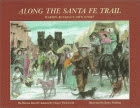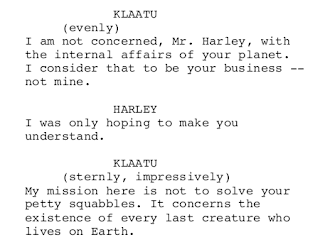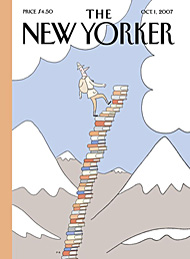
We are looking at the early work of Charles Schulz, which offers reflections on human nature that our middle school philosophers appreciate and understand.
For background as an appreciation of the cartoonist and his work, here in its entirety is Bill Watterson's recent review of the new biography of Charles Schulz. (Watterson drew the comic strip Calvin and Hobbes.) The article is reprinted from the Wall Street Journal, October 12, 2007.
The Grief That Made 'Peanuts' Good
By BILL WATTERSON
SCHULZ AND PEANUTS: A BIOGRAPHY By David Michaelis (Harper, 655 pages, $34.95)
The comic strip "Peanuts" was more than a decade old when I started reading it as a kid in the mid-1960s. At that time, "Peanuts" was becoming a force of pop culture, with best-selling books and a newly burgeoning merchandising empire of plastic dolls, sweatshirts, calendars and television specials. The overwhelming commercial success of the strip often overshadows its artistic triumph, but throughout its 50-year run, Charles Schulz wrote and drew every panel himself, making his comic strip an extremely personal record of his thoughts. It was a model of artistic depth and integrity that left a deep impression on me. While growing up, I collected the annual "Peanuts" books and used them as a personal cartooning course, copying the drawings with the idea of someday becoming the next Charles Schulz.
At that time, most of the strip went over my head, and I certainly had no understanding of how revolutionary "Peanuts" was or how it was changing the comics. "Peanuts" pretty much defines the modern comic strip, so even now it's hard to see it with fresh eyes. The clean, minimalist drawings, the sarcastic humor, the unflinching emotional honesty, the inner thoughts of a household pet, the serious treatment of children, the wild fantasies, the merchandising on an enormous scale -- in countless ways, Schulz blazed the wide trail that most every cartoonist since has tried to follow. David Michaelis's biography, "Schulz and Peanuts," is an earnest and penetrating look at the man behind this comic-strip phenomenon. With new access to Schulz's personal files, professional archives and family, Mr. Michaelis presents the fullest picture we have yet of the cartoonist's life and personality.
Born in 1922, Schulz always held his parents in high regard, but they were emotionally remote and strangely inattentive to their only child. Schulz was shy and alienated during his school years, retreating from nearly every opportunity to reveal himself or his gifts. Teachers and students consequently ignored him, and Schulz nursed a lifelong grudge that so few attempted to draw him out or recognized his talent. His mother was bedridden with cancer during his high-school years, and she died long before he could prove himself to her -- a source of endless regret and longing for him. As a young adult, he disguised his hurt and anger with a mild, deflecting demeanor that also masked his great ambition and drive.
Once he finally achieved his childhood dream of drawing a comic strip, however, he was able to expose and confront his inner torments through his creative work, making insecurity, failure and rejection the central themes of his humor. Knowing that his miseries fueled his work, he resisted help or change, apparently preferring professional success over personal happiness. Desperately lonely and sad throughout his life, he saw himself as "a nothing," yet he was also convinced that his artistic ability made him special. An odd combination of prickly pride and utter self-abnegation characterizes many of his public comments.
"Peanuts" launched in 1950, appearing in just seven newspapers. The comic strip grew slowly at first, but as its vision expanded and the characters solidified, it caught fire with readers. Schulz's fixation on his work was total, and his private life suffered as a result. Mr. Michaelis uncovers quite a bit of Schulz's more personal tribulations. Schulz's strong-willed and industrious first wife, Joyce, grew disgusted with his withdrawal, and she often treated him cruelly. As the marriage finally unraveled, Schulz had an unsuccessful affair, and he later broke up the marriage of the woman who became his second wife. Schulz's life turned more peaceful after he remarried, but he never overcame the self-doubt and dread that plagued him. Work remained his only refuge. At the end, deteriorating health took away Schulz's ability to draw the strip, a loss so crushing that it can only be considered merciful that he died, at age 77 in 2000, the very day his last strip was published.
It's a strange and interesting story, and Mr. Michaelis, the author of a 1998 biography of artist N.C. Wyeth, paces the narrative well, offering many insights and surprising events from Schulz's life. Undoubtedly the most fascinating part of the book is the juxtaposition of biographical information and reproduced "Peanuts" strips. Here we see how literally Schulz sometimes depicted actual situations and events. The strips used as illustrations in "Schulz and Peanuts" are reproduced at eye-straining reduction and are often removed from the context of their stories, but they vividly demonstrate how Schulz used his cartoons to work through private concerns. We discover, for example, that in the recurring scenes of Lucy annoying Schroeder at the piano, the crabby and bossy Lucy stands in for Joyce, and the obsessive and talented Schroeder is a surrogate for Schulz.
Reading these strips in light of the information Mr. Michaelis unearths, I was struck less by the fact that Schulz drew on his troubled first marriage for material than by the sympathy that he shows for his tormentor and by his ability to poke fun at himself.
Lucy, for all her domineering and insensitivity, is ultimately a tragic, vulnerable figure in her pursuit of Schroeder. Schroeder's commitment to Beethoven makes her love irrelevant to his life. Schroeder is oblivious not only to her attentions but also to the fact that his musical genius is performed on a child's toy (not unlike a serious artist drawing a comic strip). Schroeder's fanaticism is ludicrous, and Lucy's love is wasted. Schulz illustrates the conflict in his life, not in a self-justifying or vengeful manner but with a larger human understanding that implicates himself in the sad comedy. I think that's a wonderfully sane way to process a hurtful world. Of course, his readers connected to precisely this emotional depth in the strip, without ever knowing the intimate sources of certain themes. Whatever his failings as a person, Schulz's cartoons had real heart.
The cartoons are also terrifically funny and edgy, even after all these years. The wonder of "Peanuts" is that it worked on so many levels simultaneously. Children could enjoy the silly drawings and the delightful fantasy of Snoopy, while adults could see the bleak undercurrent of cruelty, loneliness and failure, or the perpetual theme of unrequited love, or the strip's stark visual beauty. If anything, I wish Mr. Michaelis's biography had devoted more space to analyzing the strip on its own terms as an art. Knowing the sources of Schulz's inspiration does not explain the imaginative power of the work.
I was also surprised that Mr. Michaelis largely glossed over the later years of the strip, despite major shifts in its focus and tone. As newer characters developed into dominant voices, Charlie Brown receded, becoming almost avuncular, and "Peanuts" abandoned much of its earlier harshness. It would have been interesting to learn how Schulz's conception of the strip changed over the years and what Peppermint Patty, Spike and Rerun offered him in the way of new expressive possibilities. I was not always enthusiastic about Schulz's later choices, but it says something for Schulz that he resisted the simple, robotic repetition of a successful formula. In this, too, "Peanuts" was unlike most other comic strips.
For all the influence that "Peanuts" had on me, I was content to admire Schulz from afar, and like most of his millions of readers I never met him. Mr. Michaelis has done an extraordinary amount of digging and has written a perceptive and compelling account of Schulz's life. This book finally introduces Charles Schulz to us all.
Mr. Watterson is the creator of the comic strip "Calvin and Hobbes."
Peanuts cartoon: UFS, Inc.


 A foray into 1830s-1850s western U.S. history leads us to a no-holds-barred study of the Santa Fe trail and life on the wagon trains. Here are the books we're reading. (We can already tell you that Commerce of the Prairies is a masterpiece of the genre.)
A foray into 1830s-1850s western U.S. history leads us to a no-holds-barred study of the Santa Fe trail and life on the wagon trains. Here are the books we're reading. (We can already tell you that Commerce of the Prairies is a masterpiece of the genre.) 

























